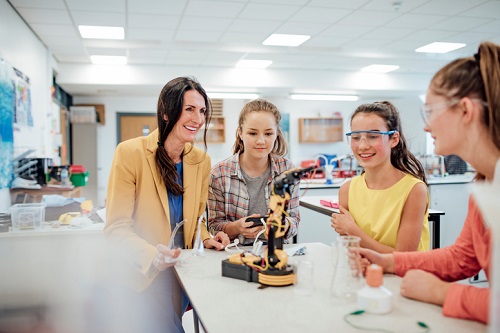
While a good education is often spoken about as a path towards employment, higher living standards and a more fulfilled life, there are other critical benefits that can be realised at a national level.
After all, some of the most highly-performing education systems in the world are also the healthiest democracies.
Finland, Sweden and Norway are just some of the high-performing school systems that also enjoy a ranking at the top of the global freedom index. And for those wondering whether this is just a ‘European thing’, Japan and South Korea are other thriving democracies that boast enviable PISA scores.
One particular skill that these education systems hold in high regard is critical thinking, which enables young people to gather information, identify credible sources and take alternative views into consideration before making informed decisions.
When it comes to large portions of a nation’s population engaging with media, political discourse and the voting process, critical thinking – or the absence of it – can make a profound difference to the direction that their country takes (we’ve all heard that sayings: “A nation of sheep soon begets a government of wolves” and “you get what you vote for”).
So where does Australia sit in this regard? Are our schools adequately informing young people about democracy and their human rights?
In the context of the opening paragraph, let’s look at where our education system sits in global rankings.
The latest Programme for International Student Assessment (PISA) rankings put Australia in 21st place among 48 other countries when it comes to the educational skills and knowledge of its 15-year-old students. Last year, the United Nations Children's Fund (UNICEF) report card ranked Australia 39 out of 41 high and middle-income countries in achieving quality education.
In the 2017 Global Democracy Index, Australia ranked eighth in the world – not a bad score by any means – but a report released in December found that fewer Australians have trust in their democracy.
According to the report by the Museum of Australian Democracy and the Institute for Governance and Policy Analysis at the University of Canberra, satisfaction with the way democracy works in Australia has fallen significantly over the last decade.
In 2007, 86% of voters were satisfied with Australia’s democracy, but that figure dropped to 72% by 2010 and then went into freefall from 2013, plummeting from 72% to 41% between 2013 and 2018.
The most recent National Assessment Program – Civics and Citizenship (NAP-CC) report, which is used to measure students’ knowledge of government, judiciary and democratic processes – found that just 55% of Year 6 students achieved at or above the standard.
Worse still, the rate of Year 10 students attaining this standard was just 38% -- the lowest result on record.
Recognising the seriousness of these trends, a push is underway to educate children about democracy, as well as their human rights.
Last year, a free resource was announced for high school teachers to help children explore and understand Australia’s democratic freedoms.
The Story of Our Rights and Freedoms curriculum unit was created through a unique partnership between education not-for-profit Cool Australia and the Australian Human Rights Commission (AHRC).
The 18-lesson unit for Year 7-10 broadens students’ understanding of democracy and its function throughout history with captivating curriculum for history and civics and citizenship classes.
Chris Vella, the head of education at Cool Australia, says students can never know too much about democracy if they are to become active and informed citizens.
“Through the success of a previous unit of work that we partnered with the Australian Human Rights Commission to create, Magna Carta, we have seen that students and teachers are seeking out engaging content in this area,” Vella told The Educator.
“This is why we have continued this partnership to create 18 free lessons that explore key features of the Australian government, and how those systems act to protect the rights and freedoms of all Australians.”
The Australian Human Rights Commission (AHRC) has created an interactive website which introduces Year 5 and Year 6 students to the concept of human rights.
National Children’s Commissioner, Megan Mitchell, says providing education about the importance of human rights is “one of the central functions” of the AHRC.
“Through our free school resources, we aim to support teachers and students to apply human rights in their day-to-day lives and bring about positive change within their communities,” Mitchell told The Educator.
“In the past, the Commission has mainly focused on developing resources for high school students. However, there is no age-limit for learning about human rights and it is important that human rights education is embedded in primary schools and early childhood education as well.”


